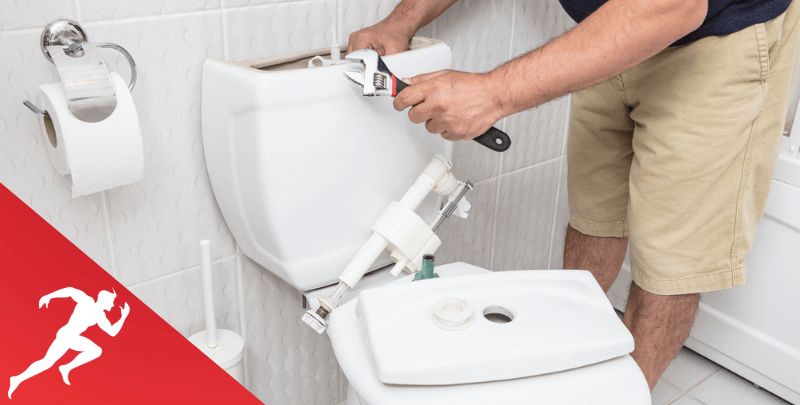A running toilet is a minor annoyance and a symptom of underlying issues in a plumbing system that can lead to significant water wastage and inflated bills. Professional plumbers employ various techniques to diagnose and fix these problems effectively. This article provides an in-depth look into the methodologies used by professional plumbers to repair running toilets, ensuring functionality and efficiency.
Initial Diagnosis
- The process begins with a thorough diagnosis. A professional plumber first listens to the homeowner’s description of the problem, followed by a physical examination of the toilet running occasionally. They check for common issues such as a stuck flapper, a malfunctioning fill valve, or a misaligned float. This initial assessment is crucial as it guides the subsequent steps of the repair process.
Flapper Valve Inspection and Replacement
- A faulty flapper valve is one of the most basic causes of a running toilet. Plumbers inspect the flapper for wear, decay, or improper sealing. If the flapper is damaged or warped, it cannot form a proper seal, causing water to leak from the tank into the bowl continually. Replacing the flapper is a straightforward solution that plumbers often undertake, ensuring a proper seal and stopping the unnecessary flow of water.
Adjusting the Fill Valve
- The fill valve, responsible for controlling the water level in the tank, can also be a culprit. Professional plumbers check if the valve functions correctly and adjust it to ensure the water stops filling at the appropriate level. An improperly adjusted fill valve can overflow water into the tube, causing the toilet to run continuously. Adjustments might include tightening or replacing components or adjusting the water level control mechanism.
Inspecting the Float Mechanism
- The float mechanism controls the shut-off of the fill valve. Plumbers assess whether the float is set at the correct height. If the float is set too high, it can stop the fill valve from shutting off properly, leading to a running toilet. Adjusting the float to the correct level ensures the water shuts off at the right time, preventing overflow and unnecessary water wastage.
Checking for Hidden Leaks
- Sometimes, the cause of a running toilet isn’t immediately visible. Professional plumbers use dye tests to check for hidden leaks in the toilet. They can see if the color appears in the bowl without flushing by adding a few droplets of food coloring to the tank and waiting. If it does, this indicates a slow, hidden leak, usually around the flapper or the flush valve seal.
Repair or Replacement of the Flush Valve Assembly
- In some cases, the issue may lie with the flush valve assembly. A professional plumber will assess whether the flush valve is damaged or if the seat it sits on is corroded or pitted. Depending on the extent of the damage, the plumber may choose to repair the existing valve or recommend replacing the entire flush valve assembly to ensure a long-term fix.
Ensuring Proper Chain Tension
- The lift chain, which connects the flapper to the flushing handle, can also be a source of issues. If the chain is too tight or loose, it can prevent the flapper from functioning correctly. Plumbers ensure the chain has just the right amount of slack, allowing the flapper to seal appropriately after each flush.
In conclusion, fixing a toilet running occasionally involves a systematic approach that commences with a thorough diagnosis and includes precise adjustments and replacements. Professional plumbers are qualified to identify and resolve the various issues that can cause a toilet to run. They use their expertise to ensure that each component of the toilet’s mechanism functions correctly. Their role is crucial in fixing immediate problems, preventing future issues, and conserving water. By entrusting such a task to professionals, homeowners can rest assured that their toilets will be repaired efficiently and effectively, contributing to the overall water efficiency of their homes.
